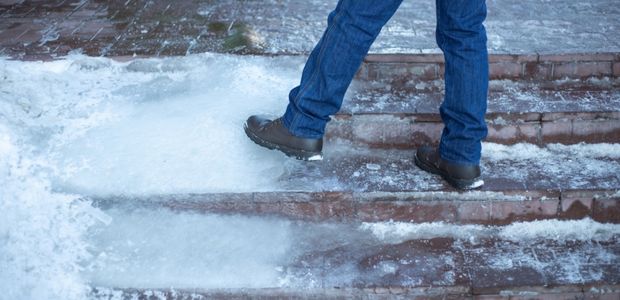
Avoiding Slips and Falls on Ice
With the right tools and preparation, employees and employers can reduce their risk of injuries.
- By Alex Saurman
- Feb 06, 2023
Winter isn’t coming; it’s here.
That means more hazards for employees, including the risk of slips and falls. There have been reports of employees slipping on ice, resulting in injuries or death.
In Maine, from January 2012 to June 2013, 1,035 workers filed “lost-time injury claims” from incidents involving workers slipping and falling on ice and snow, according to the Maine Department of Labor.
Although these incidents occurred across multiple industries, the transportation and material moving industry and the office and administrative support industry saw the most ice or snow-related slips and falls. Across all industries, they mainly occurred on parking lots and ground surfaces and resulted most often in sprains, strains and tears.
To avoid incidents like these happening, there are steps employers and employees can take.
- Before beginning work, use tools like shovels, snow plows and deicer to clear any surfaces employees will be using. This includes sidewalks, parking lots, stairs and other walking or working surfaces.
- Employees should also use proper footwear for the conditions, like shoes or boots with good rubber treads, OSHA said. Another option to consider is ice cleats.
- When walking on any surface, be sure to move slowly and take small steps, OSHA recommended.
- According to the Air Force Materiel Command, use caution when getting into or out of a vehicle. Information from the Department of Maine also showed that from the same time period, almost 37 percent of claims involved “going to or from vehicles on the way to or from worksites.”
About the Author
Alex Saurman is a former Content Editor for Occupational Health & Safety,who has since joined OH&S’s client services team. She continues to work closely with OH&S’s editorial team and contributes to the magazine.